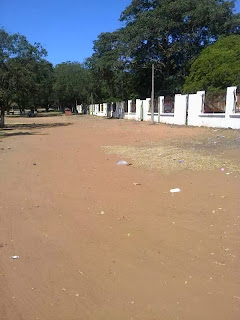 |
| The beauty of wildlife |
Mole National Park is Ghana's biggest wildlife. The park is situated in northwest Ghana on grassland savanna and riparian ecosystems at an elevation of 150 m, with sharp escarpment forming the southern boundary of the park. The park's entrance is reached through the nearby town of Larabanga. The Lovi and Mole Rivers are ephemeral rivers flowing through the park, leaving behind only drinking holes during the long dry season. This area of Ghana receives over 1000 mm per year of rainfall. A long-term study has been done on Mole National Park to understand the impact of human hunters on the animals in the preserve.
The park's lands were set aside as a
wildlife refuge in 1958. In 1971 the small human population of the area was
relocated and the lands were designated a national park. The park has not seen major
development as a tourist location since its original designation. The park as a
protective area is underfunded and national and international concerns exist
about poaching and sustainability in the park, but its protection of important
resident antelope species has improved since its initial founding as a
preserve.
https://blogger.googleusercontent.com/img/b/R29vZ2xl/AVvXsEgRY3QqNLccLGtxgzsBIjIW9qvfy-ZTE1VqNzCrxg4oZShhfom76elHSPHimD3QpWypSQMw089gIcrjZdULoPSIpoX31UF0wDZEJKS7f0hjMUj18fPjEMrIPpFOkwonv5cPwON-MLRskXMd/s1600/mole+national+park.jpg
The park is an important study area
for scientists because of the removal of the human population from within the
park allowing for some long-term studies, in particular, of relatively
undisturbed sites compared to similar areas of densely populated equatorial West
Africa. One study on the resident population of 800 elephants, for example,
indicates that elephant damage to large trees varies with species. In Mole,
elephants have a greater tendency to seriously injure economically important
species such as Burkea africana,
an important tropical hardwood, and Butyrospermum
paradoxum, the source of shea butter,
over the less important Terminalia
.
 |
| Tourist at the park |
Burkea
africana is a member of the Legume Family
that is common throughout Tropical Africa including Ghana's Mole National
Park.







